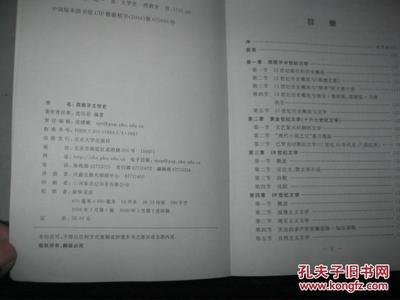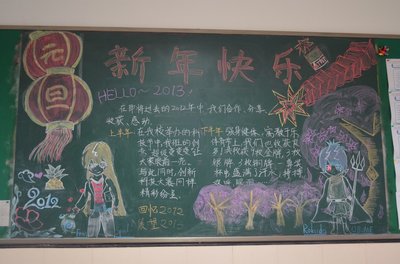我没有学习过西班牙语,原本不该涉入西班牙文学研究,因为最近讲授欧洲文学史的缘故,西班牙文学是一个重要的内容,而国内比较缺乏实用且简明的《西班牙文学史》,所以转录以下相关资料,仅作为教学的参考,敬请西班牙语的学人指正。
PRESENTATION OF HISPANIC LITERATURE
Hispania is the name that theRomans gave to the Iberian Peninsula.
This was converted into aRoman province at the end of the 3rd century BC.
From Hispania, the wordespañol was derived, which has been in existence since thebeginning of Spanish literature in the Castilian language.
But not all Spanish literatureis written in the Castilian language. When Hispania first existed,books were written in Latin, as the peninsula was dependent onRome. Thus, this is a Spanish book.
This last book was copied,probably by Spanish Visigoths, barbaric Germans who settled inHispania during the 5th century, and who were to continue writingliterature in the Latin language.
Until 1492, it was quiteusual to see Jewish communities in Hispania, which maintained theircustoms as well as their language at the time of writing books.They called the peninsula Sefarad, from where Spanish Hebrewliterature originates. This is another Spanish book.
Since the year 711, theIberian Peninsula was occupied by Moslems, of Arabic tongue. Theterritory which they occupied – nearly the whole of Hispania- wasthen called Al-Ándalus, a name which came from a nation ofbarbarics and vandals – which hardly left a mark on the peninsula.From Al-Ándalus stems the current name of Andalucía. And so, thistoo is a Spanish book. It's part of Spanish Arabicliterature.
Between the 10th and 12thcenturies, various dialects of Latin origin coexisted on thepeninsula, which fought to assert themselves over the others.
Someattained the rank of language, such as Castilian, Catalan,Galician-Portuguese and Basque, although in this last language -which doesn´t derive from Latin or Indo-European, and which is ofunknown origin – we know of no books until recent times.
Many of the books writtenin the 13th century, were written in dialects which have nowdisappeared, like those from Rioja, Aragon and Leon, etc.
The book, always manuscripted,thus existed until the end of the 15th century.
At the beginning of the 16thcentury, The Catholic kings asserted that Castilian was to be theprincipal language in Spain.
For that reason, todayCastilian is synonymous with Spanish.
The Kingdom of Portugal hasexisted since the 12th century and the Portuguese language is avariation of medieval Galician-Portuguese. For political reasons,it is considered a language in its own right. The division betweenSpain and Portugal broke the identification of Hispania withEspaña. Therefore, when we talk of Hispanic literature, we alsoinclude Portuguese. Between 1580 and 1640, Portugal formed part ofSpain.
During the 19th century,romanticism awoke the nationalist feelings of certain Spanishregions, since then Catalan,Galician and Basque literature hasdeveloped alongside the predominant Castilian literature.
Apartfrom during the Franco years (1939-1975) Spanish literature waswritten in these four languages, although the most representativehas always been Castilian.
Today there is a certainambiguity: Some critics identify Spanish literature with Castilianliterature, and use the nomenclature Hispanic literature for theremaining peninsular languages.
Others consider Spanishliterature that which is written in Spain, in any language.
Under the heading Hispanicliterature, we also include Hispano-American, Portuguese andBrazilian literature, and that written in Hispania in any languageor epoch.
To conclude, it is importantto stress that Hispanic literature is simply a branch of Romanliterature, that is to say, of Latin derivative languages.Frequently Hispanic literature owes more to European literaturethan to its own tradition. It is a mistake to lose sight of thisEuropean focus.
Spanish medieval poetry covers four centuries. This assumes aconsiderable amount of texts of different natures: narrativepoetry, almost Provençal lyrics, Castilian texts written in Arabiccharacters –aljamiado-, etc.
For thisreason, it is convenient to split them into distinct sections. Weoffer the following five headings:
1.- The Spanish lyric has been considered theoldest in Romance Europe, since the discovery of the kharjas. Thesewere written in Mozarabic dialect -a variation of Romance, derivedfrom Latin- with Hebrew or Arabic characters. They are the core andend of the "moaxajas", poems widespread throughout the Iberianpeninsula written in Semitic languages. Samuel Stern managed todecipher the first ones, in Hebrew poetry, in 1948.
These kharjas consist ofmainly refrains of two to four verses, sung by women who arecalling to their absent lovers. Other times, the poet pays tributeto his patrons, relevant governors, etc.
We have some unsigned worksfrom the 10th century and others signed by identified authors. Itis assumed that they were written during an earlier epoch - evenbefore the Arab invasion - but the Andalusian muslims were able tounderstand them and mixed them with words from their own language.For this reason it proved difficult for the modern philologists todecipher them. In the Arab kharjas we find arabisms mixed perfectlyintelligibly with Romance phrases. The kjarjas are the oldestlyrical poems of all Romance poetry.
2.- In Galician-Portuguese we have conservedanthologies of poems which have been collected in books knowna
a) "cantigas de amigo", compositions in which the verse isrepeated, changing only a few words. They are of colloquialorigin.
b) cantigas de amor, compositions which copy the Provençal learnedpoems,
c) cantigas de escarnio of ridicule, which satirize well knownpersonalities and events.
Among the collections of verse, the Cancioneiro da Ajuda,Cancioneiro da Vaticana and the Cancioneiro da Biblioteca Nacionalo de Colocci-Brancuti should be emphasized. The most renowned poetsare Martín Codax, Nuno Fernandes, Airas Nunes, the king Don Denís,Xohan Zorro, etc.
3.- Until the 16th century, works were generallycollected in Castilian, refrains and short compositions probablyderived from longer poems, lost today. Among these we conserve thecarols, difficult to date or classify.
1.- Nearly four thousand verses of "Canter deMío Cid", two folios of "Canter de Roncesvalles" and more than athousand verses of some "Mocedades de Rodrigo" is all we haveconserved of the medieval Spanish epic. The majority of scholarsconsider there should be much more than the amount we have justindicated.
The Spanishepic was spread around the 12th and 14th centuries by minstrels whorecited anonymous poems. They were supported by learned authors oreven clergymen, who adapted the old versions. The "Poem de FernánGonzález", written in cuaderna vía, supports this hypothesis.
It is probable that the Spanish epic is derived from the French,without forgetting a possible Visigoth origin and a few traces ofArabic in its making. It is written in rhyming verse, grouped inseries of different numbers of syllables - generally of seven oreight.
They tell ofthe exploits of the exemplary peninsular heroes.
By clicking on the images you can see an extension of the pagesaccompanied by the first and only modernized version© of thecomplete epic poem, carried out exclusively for Spanish-Books.net,by D. Miguel Pérez Rosado, Doctor in Hispanic Philology.
2.- The Poem of the Cid is preserved in a 14thcentury manuscript, which seems to have copied another of 1207,transcribed by Pere Abbat.
It isdivided into three parts which tell of the Cid´s exile by AlfonsoVI, caused by courtesan traitors rumors. After housing his wife anddaughters in a monastery and receiving money from two Jews, thehero sets off with his troop towards Valencia, taking overterritories from the Moors.
After layingsiege to Valencia, he took it and at the height of prosperity, hemarried his two daughters to two Leonese nobles, the infants ofCarrión. These, on their return journey to Castile, insult andabandon their wives, believing them to be common. Collected by arelation of Cid´s, they are revenged by their father, who begsjustice from the king. A duel, presided over by representatives andconcerned parties of both groups, bestowed victory on Cid´s side.His daughters, now honored, married kings of Spain, improving thesocial position.
belief that lost medieval epic poems are foundtransformed in some of Romancers poems. They would be partialadaptations, the majority of which were collected in the 16thcentury.
 爱华网
爱华网



